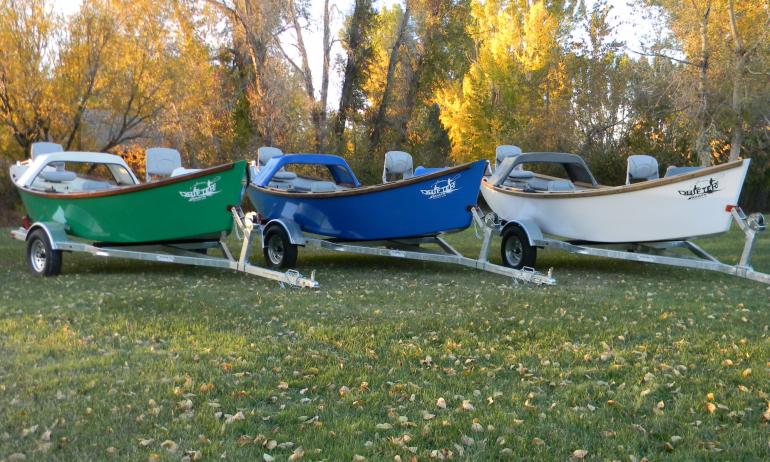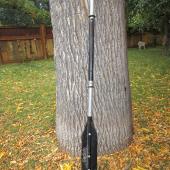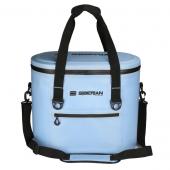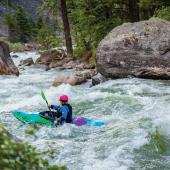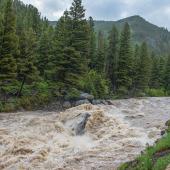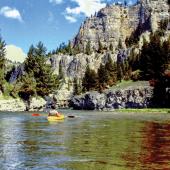Yellowstone Drifter
In a small industrial park west of Bozeman and a long fly-cast north of I-90 sit a remarkably modest office and factory that are the home of Yellowstone Drifter Boat Company.
The roots for this small, locally owned company began growing back in the 1970s when the Laviguerre Brothers made two lines of fiberglass drift boats: the Eastside and the Lavro. The Eastside's 15-foot hull grew in popularity, and the company moved to Livingston, Montana, where the guides on the Yellowstone began fishing the popular Eastside shape. In 1986, the company moved to Jackson, and Jeff and Greg Shouse brought it back to the Gallatin Valley in the early 90s. Throughout the years, these owners maintained the integrity of the Eastside design but they were definitely Yellowstone Drifters.
The current owners of Yellowstone Drifter Boat Company are Dave and Ellen Pedersen, and Ron Smith. In 1995 Dave and Ellen purchased the company from the Shouse brothers. Dave still chuckles when he thinks about his first blue 15-foot Madison. "I liked the boat so much, I bought the company," he says.
In the Drifter tradition, the Pedersens continued to use the same mold for the Madison. In 1998, a partnership was formed with fiberglass specialist and experienced boat-builder Ron Smith, and through that union the fiberglass work and the boat sales were brought under one roof.
This trio continued to produce the popular 15-foot hull, but they began to cater the trimmings on the boat to each owner's specific needs. They installed a pedestal seat in the front rather than a bench seat. By removing the bench, they reduced the structural elements in the front of the boat, and the trio developed a new design for the sponsons inside the boat.
Sponsons are the reinforcements on the insides of the boat that run near the floor, stretching from bow to stern underneath the oarlocks. By opening those up, they made them stronger and eventually added molded rod tubes inside the sponsons. These moves, and others like them, made Yellowstone Drifter's boats appeal to both guides and private individuals looking for a customized boat. "We will build them to suit," says Dave. "That has always been our approach, and it always will be."
This custom-oriented policy led Ron and Dave to experiment in 2000. They were hearing from boat owners that the fisherman in the back was feeling crowded, and the one in the front had too much room. Some guides wanted a bigger boat. So Ron and Dave made a new mold, stretching nearly 16 feet from bow to stern, and throughout the third week in December that year, they took it floating.
They left the seats, coolers, and storage loose inside the boat on these maiden voyages in order to experiment with their final positioning, and that spring, the Yellowstone model became available. It is 14 inches longer than the Madison, has a raised, level floor for the rear angler, and still sports the classy and convenient flat ash gunnels.
As always, Yellowstone Drifter will customize both models, including the paint scheme and the positioning of the foot rests, rower's seat, and oar locks. "I think rowing a drift boat is an individual thing," says Pedersen, and The Yellowstone Drifter Boat Company continues to cater their boat-building around that philosophy.


